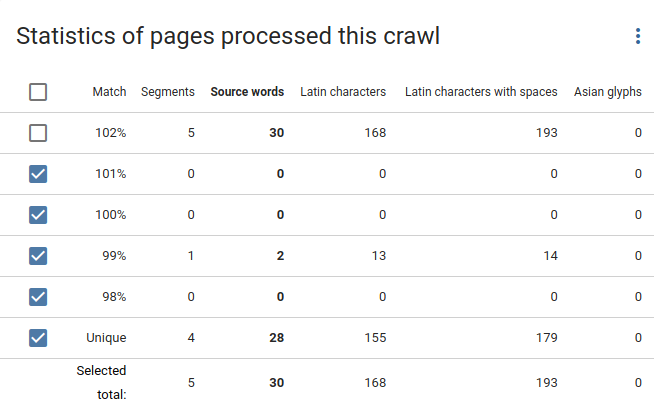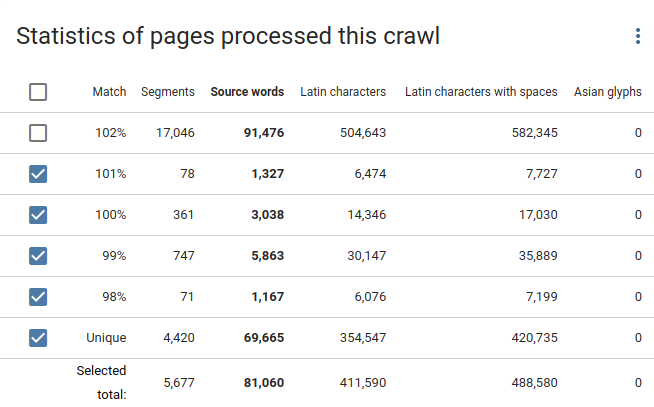Understanding our new pricing model
This post has not been updated in a long time. The information may be out of date.
With our new pricing model introduced recently, we noticed an uptick in support tickets asking our assistance with creating a quote for a website. In this short writeup, we’ll discuss the new model as well as the steps our support team takes to create an estimate. Hopefully, by the end, you’ll be able to follow in our footsteps on your own for a faster turnaround time. Read the full article for the details!
Overview of the new pricing model
Our new pricing model boils down to two main components: base prices and add-ons. The former are dependent on the size of the project while the latter are completely optional. The base price depends on the quantity of the content and has two components.
A one-time fee covers the setup and potential reverse engineering necessary to implement the technology. It depends on the amount of content to be translated. You can just sit back and work with the XLIFF files that we provide for translation or post-editing. We used to refer to this level of premium support as a Managed project, but we now consider this the default.
To summarise, the tier-based fix fee includes:
- Our team handling the entire initial setup process for you
- Crawling the site to build the Pages list
- Extracting and storing the source content and translations
- Unlimited Machine Translation or providing XLIFF files for you to translate
- Free post-editing either via the Workbench or through XLIFF files
- Unlimited team size - invite as many collaborators as you need
- Providing one line of JavaScript code that must be inserted into the original site to push the translations live
Then, the monthly fee is the technology fee. It covers the extraction and storage of new content, as well as the cost of translating the new content. Additionally, serving the translations is provided without limit, ensuring that the costs stay consistent month-by-month.
Add-ons are extra services we offer that aren’t strictly necessary for website translation. Most of them are “nice to have"s that the website owner may or may not want implemented on the translated site. Let’s check them out one-by-one.
-
With the Translation Proxy add-on, Easyling is switched into proxy mode that most existing users are familiar with - this used to be the main offering. The proxy uses Google’s infrastructure for serving and caching. This means pages will load with virtually no additional latency compared to the original site. This can improve the user experience of your translated website. The Proxy also improves SEO through three aspects. Firstly, it doesn’t require JavaScript to be run, increasing compatibility with search engine crawlers. Secondly, it makes content available under a separate address, so crawlers won’t assume it’s already indexed. Finally, just like Basic publishing, it mirrors every optimisation in place on the original site.
-
Nowadays, users’ attention span is fairly small. If they can, they will just search your website for what they are looking for. However, by default, their queries are routed to the source server that is only aware of content in the original language. Enter localised Site Search. With this add-on, we upgrade the search bar (and search page) of your website to take queries in the target language and return appropriate results. This is especially beneficial on large sites, such as e-commerce stores or the documentation of your product.
-
SEO setup uses a content delivery network (CDN) and site pre-rendering to optimise the translated sites’ visibility for search engine crawlers. Currently, most search engines run the JavaScript code on websites, but they tend not to make promises about the timeline of doing so. This can mean that the translations aren’t indexed for weeks or months. With the SEO setup add-on, we run the JavaScript on our end and serve the result to search engine bots through a CDN.
-
Layout Adjustment refers to the process of tweaking the website to look its best with the translated content. This ensures that text expansion (e.g. when an English site is translated to German) or shrinkage (typical with Asian languages) doesn’t wreak havoc in the layout. Additionally, it is necessary when an LTR site is translated to an RTL language. Most sites aren’t prepared to handle such a transformation, so our manual intervention is necessary.
Figuring out which tier a project belongs to
Knowing all the tiers and the add-ons available, I’m certain your next questions is: but how do I know which tier example.com is in? The good news is that it’s fairly easy to calculate: just run a Discovery against it. To do so, log in to the Dashboard and open the Create new project dialog. There, you can enter the Website URL, specify the website language and, crucially, check Start Discovery along with project creation. This allows you to specify the Page limit. I recommend that you guess the size of the website and add a couple hundred to it for an appropriate Page limit. Discoveries cost pennies, so there is no need to worry about the costs, but note that unlimited discoveries should never be started. After you click Create, the Discovery will start. When it finishes, you’ll receive statistics that look something like this:
You’ll notice that example.com has very little content, only 30 words to translate. This puts it squarely in the Small tier with lots of room to grow. This means that localising this site would incur no setup fee and the technology fee would be 29 USD / month.
Note: Easyling translates repeating content for free. This could save 50-80% of the cost compared to the total word count.
For a more realistic example, let’s consider easyling.com. You can see its statistics at the time of writing below.
The most important thing to highlight is that if every word was counted, that would add up to 172,536, right in the Enterprise category. However, due to the fact that 102% matches are free, this project should be quoted at 81,060, in the Large category with tons of room for future blogposts. Additionally, it may be wise to exclude older blogposts that don’t receive much traffic anyway from the scope. This can move the project to the Medium tier. These two aspects combined can save 2091 USD of setup fee and 110 USD per month as the technology fee in the Medium tier is quite nice.
Creating your quote
If you followed along with the steps you know have the scope of the translation project agreed on with the client. You know the amount of translation work to be done.
Let’s consider easyling.com as our example as you too can use it to demonstrate the capabilities of the platform. With the blog section completely excluded, this site is in the Small tier - it’s just a marketing site after all. This means that for translating this site, there would be no setup cost (it would be weird to invoice ourselves anyway) and the upkeep cost is 29 USD / month for unlimited visitors per language. As Machine Translation is included in these prices, we wouldn’t have any further costs but if you are an LSP, you’d add the cost of human translation on top of these prices.
Frequently Asked Questions
Are current projects grandfathered in at the previous rates?
Yes, existing projects are left unchanged. However, if you’d prefer, they can be moved to the new pricing model. To get started with that, just drop us a line at support@easyling.com.
The old rates are also available for self-serving customers.
However, they will not be made available for new managed projects.
What’s the difference between LTR and RTL languages?
From the technology’s and the pricing structure’s perspective, there is no difference. However, it should be noted that if a site is translated from LTR to an RTL language, layout adjustment is much more likely to be necessary. Unfortunately, most websites don’t consider the ease of localisation, so the layout is likely to break if suddenly the text is meant to be read from the other side.
Is there a demo site that I can use to show the tech to my clients?
There are multiple. The main one is our own website. It is a great way to show off a small marketing site. Note that it could grow 5x and still be in the Small tier.
Additionally, we have a larger project that we are authorised to use as a demo: KGP Co. It shows a larger site as well as localised site search integration.
Are there browsers that do not display JavaScript?
By default, every major browser runs JavaScript as the Internet would be barely usable without it. It can be turned off if a particularly security-conscious user decides to do so. However, in that case, the rest of the site is likely to break as well.
Would we use the same on-line interface to manage the project as we do with the proxy? And use the Workbench to manage translations?
Yes, for now. However, in the future, the idea is that projects should become managed projects, so access could be made available to a simplified version of the Dashboard that hides some of the more advanced settings.
Do third-party integrations, such as Dropbox imports and exports, work with the JavaScript engine?
Yes they do. Their functionality isn’t impacted by the new publishing method.
How can we assist you?
We are happy to help with your questions and concerns about your website localization project.
Book a 30-minutes consultancy meeting with our experts and ask your questions!

